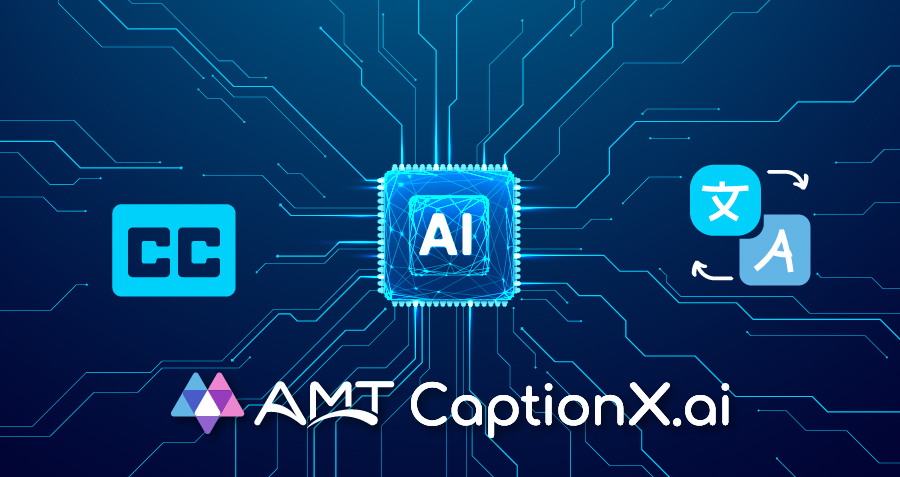Published in ABU's 2nd Edition of Future of News Report 2025
In today's rapidly evolving broadcasting landscape, effectively localising content to connect with diverse regional audiences is essential. Public and national broadcasters across the Asia-Pacific region, many of which are represented by the Asia-Pacific Broadcasting Union (ABU), face critical challenges in delivering timely, culturally nuanced content to their multilingual audiences. Recognising this demand, AsiaSat and its subsidiary, AsiaSat Media Technology (AMT), have harnessed advanced Artificial Intelligence (AI) technologies to deliver groundbreaking innovations in content localisation.
Transforming Content Localisation through AI
Traditional manual localisation processes such as subtitling, dubbing and voiceovers, while effective, can be labour-intensive, costly and inefficient. AI enhances these existing workflows by streamlining complex tasks, resulting in significant improvements in speed, accuracy and cost-effectiveness. AMT’s integrated AI-driven solution not only accelerates localisation for both pre-recorded and live content, but also enhances linguistic precision and cultural resonance, which are crucial for broadcasters to engage with the diversity of regional audiences.
Preserving Authenticity and Cultural Nuance
One innovative approach is Neural Voice Cloning technology, which allows advanced AI models that are trained on diverse vocal datasets to generate culturally nuanced voiceovers. These AI-driven voiceovers retain the emotional tone and authenticity of the original speakers, matching even regional accents and dialects. As a result, broadcasters can preserve the integrity and originality of iconic anchors or presenters while seamlessly aligning voice profiles with their branding to facilitate deeper audience connections.
Bridging Language Gaps Instantly
Real-Time Speech Conversion technology marks another significant advancement in content localisation, particularly transforming live broadcasting scenarios such as news bulletins, press conferences and emergency announcements. Through seamless integration, broadcasters can instantly deliver dubbing in major regional languages, including Mandarin, Hindi, Bahasa and Arabic. The capability to accurately translate speech in real-time significantly enhances broadcasters' ability to compete for audience attention and disseminate timely, crucial information to diverse populations across language barriers.
Enhancing Viewer Immersion
To further elevate the viewer experience, sophisticated AI-driven speech and vision algorithms can be employed to optimise lip-sync accuracy. These algorithms analyse speakers' lip movements and facial expressions, generating synchronised dubbed audio that closely aligns with visual cues. The result is a highly immersive viewing experience that greatly improves audience perception of dubbed content. Lip-sync optimisation is particularly valuable for public and national broadcasters as it helps maintain audience trust and engagement, contributing to an authentic and seamless viewing experience.
Advanced AI Captioning Solutions
By leveraging advanced machine-learning algorithms, AI captioning streamlines subtitle generation, significantly reducing turnaround times and costs. Its adaptive learning capabilities continuously enhance transcription accuracy by learning from user corrections, while advanced speech recognition effectively handles multiple accents and languages. Additionally, built-in speaker identification and customisable formatting features allow broadcasters to provide clear, accessible captions that align with brand identity and regulatory standards.
Enhancing Audience Engagement
AI-driven localisation is not just a technological advancement; it is a strategic priority that enables broadcasters to reach wider audiences more efficiently. By rapidly adapting content to diverse linguistic contexts, broadcasters can significantly expand their viewer base, drive deeper audience engagement, and potentially enhance commercial revenues. Moreover, these innovations improve accessibility for viewers with hearing impairments and non-native speakers, aligning broadcasters' missions with goals of inclusive and equitable content delivery.
Continuous Innovation
Despite impressive advancements, the use of AI in localisation presents ongoing technical challenges, such as accurately handling noisy backgrounds, multilingual dialogues, heavily accented speech, slang and unique cultural references. AMT continues to invest in research and development to strengthen machine learning algorithms and reasoning capabilities, ensuring robust performance across diverse broadcasting scenarios.
In addition to AI-driven localisation, we offer technology solutions, including:
- Low Latency, High-Quality Streaming: Global delivery of live sports, news events, conferences, webinars, and e-learning.
- FAST Channel and Content Distribution: Leveraging AI to deliver Free Ad-Supported Streaming TV (FAST) channels and customised digital distribution for TV platforms, hotels and maritime environments via the SAILAS TV app.
- Personalised and Targeted Advertising: Utilising AI-driven audience analytics to deliver highly personalised advertisements and maximise viewer engagement.
AsiaSat and AMT are committed to supporting broadcasters across the Asia-Pacific region to address localisation challenges and enhance viewer experiences.
To explore how these AI-driven localisation solutions can benefit your broadcasting operations, please contact our experts for a demonstration tailored to your organisation’s unique needs.

About AsiaSat and AMT:
AsiaSat Media Technology Limited (AMT), a subsidiary of AsiaSat, specialises in innovative media technology solutions designed specifically to enhance media and broadcast capabilities throughout the Asia-Pacific region. AMT’s advanced services include high-quality live-streaming, AI-driven localisation, and comprehensive broadcasting technologies, addressing the evolving dynamics of the video ecosystem in close partnership with broadcasters across the region.

Author:
Andy Chang, Chief Technology Officer, AMT
Andy leverages over 20 years of broadcast and OTT technology experience to design innovative solutions for media delivery. He has designed cloud and appliance systems for major networks and sports organisations, and now pioneers AI integration in media workflows. His work on AI captioning demonstrates how intelligent technologies can enhance efficiency while creating more engaging audience experiences through personalised content delivery.
Click here to read the article
Source: https://www.abu.org.my/ (The Future of News Report 2025, 2nd edition)
